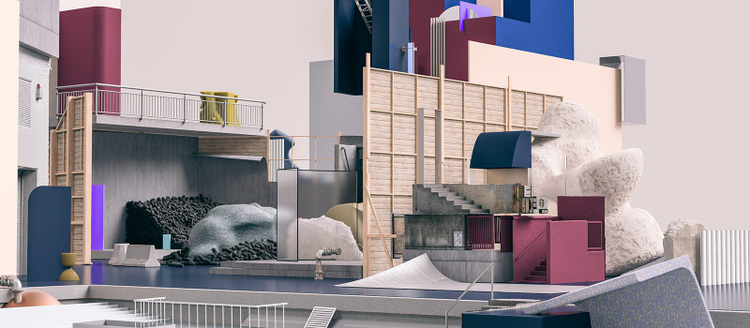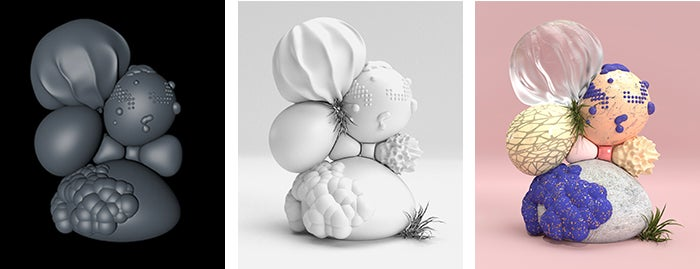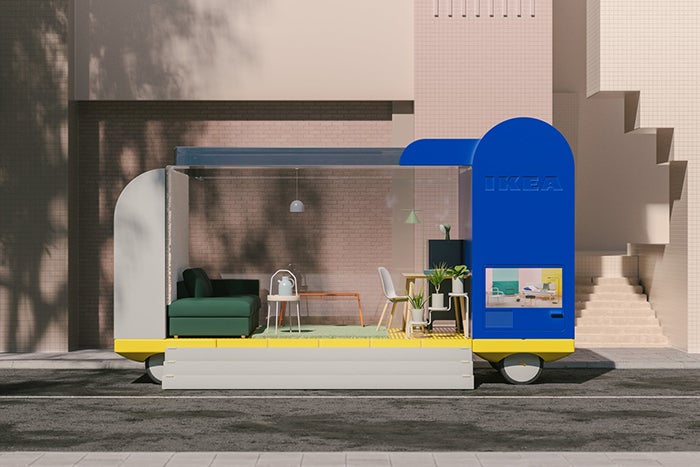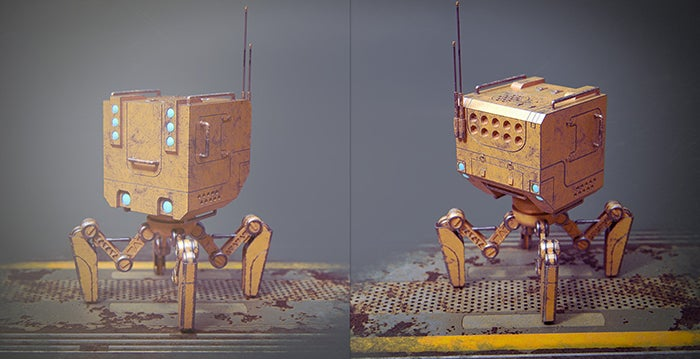Discover a New World of 3D Creativity at Adobe MAX 2019
Discover how tools like Adobe Dimension and Substance Painter can expand your design horizons as leading artists reveal how they made their own leaps into 3D at Adobe’s creativity conference this November.

Powerful tools like the Substance product suite make it possible for foam Studio to work spontaneously in 3D: a workflow the brand consultancy discusses at Adobe MAX 2019.
Adobe MAX 2019 is a chance to experience everything that Adobe does in the world of design – and these days, that means design in three dimensions (a leading design trend in the last year). The company’s global ‘creativity conference,’ which takes place in Los Angeles from November 4-6, provides a chance both to explore Adobe’s work at the frontiers of computer graphics and to discover what its existing tools can do for your workflow: tools that now include 3D material-creation packages Substance Painter and 3D design and rendering software Adobe Dimension.
During this year’s show, guest speakers including graphic designer Erin Kim, brand image consultant at foam Studio, and Christophe Desse, lead technical artist at AAA game developer Naughty Dog, will share their own experiences of making the switch from working in 2D to working in 3D using Adobe’s tools, and the enormous gains in creative flexibility that can result.

With its shallow learning curve, Adobe Dimension helped graphic designer Erin Kim overcome technical hurdles on her move from 2D to 3D: a journey she will recount at Adobe MAX.
From fake 3D to flawless 3D with Adobe Dimension
Erin Kim, now a senior product designer at Adobe, but whose career in graphic design includes spells at both R/GA and Pentagram, wants to help “[people] like myself a few years ago: graphic designers without any former training in 3D,” become more efficient and creative by mastering 3D skills.
In her session, Adobe Dimension: Enabling 2D Designers to Push the Boundaries of Creativity, which runs on Tuesday, November 5 at 8:15AM and Wednesday, November 6 at 10:15AM, Erin will discuss how Dimension automates technical tasks. This includes tasks like texturing and lighting, which helped to smooth her journey from software like Adobe Photoshop and Adobe Illustrator.
“Before Adobe, I frequently created 3D mockups for everything from package designs to sneaker campaigns. During that time, I would ‘fake’ the 3D effect [with] painstaking and time-consuming 2D image manipulation,” she says. “As I started using 3D software, I learned to make very simple models fairly quickly [but] the real challenge was how to make [them] look realistic. I often ended up coming back to Photoshop to [add] effects such as lights and shadows because I couldn’t get beyond the gloomy greyish screen on the 3D application.”
“When I joined Adobe, everything changed. I knew immediately that Dimension was the 3D app I had been dreaming of – [an app for] 2D designers like myself who wanted to work in 3D but had been intimidated by its complexity. Ever since then, my personal mission has been [to deliver] user experience in the most accessible way, without a big learning curve.”
In her talk, Erin will demonstrate how Dimension can be used for a range of tasks, from logo and packaging designs right up to creating a complete photorealistic 3D scene. “The thing that I want my audience to remember is [that] 3D is relevant, accessible and even fun,” she says.

Spaces on Wheels, foam Studio’s “playful research project” into the future of the car. The firm uses a range of 3D tools in its work, including Adobe’s Substance Painter.
The Substance suite: Putting the creativity back into 3D
Berlin-based branding specialist foam Studio also uses 3D software in its work, which ranges from global advertising campaigns for Nike to designing the autonomous car of the future. For the past two years, that toolset has included Adobe’s newest 3D applications, and texture-painting software Substance Painter.
In his session How Substance Apps Bring Stories to Life in Creative, Conceptual 3D Design, which takes place at 5:15PM on Monday, November 4, foam Studio Managing Partner Matthias Winckelmann will discuss how the Substance product suite puts the focus back on creative thinking in what can otherwise be an abstract, technical discipline.
“The Substance tools, especially Painter, are great in that aspect, as they let us work directly on 3D models,” he says. “A big part of our approach to CG is trying to be as direct as possible. Compare the brush stroke of a painter, which goes straight to the canvas, with how we as creatives [traditionally] design things using a computer.”
“Everybody at foam Studio is a designer and artist and [our backgrounds are] not necessarily technical at all,” he continues. “Therefore, we are always intrigued by tools that can create the quality we are longing for, while still being approachable and easy to use.”
Matthias notes that with software like Substance Painter, making the move to 3D need not be a technical process. “You can get the hang of it rather quickly,” he says. “The creative part is much harder to learn, and if you have mastered that already, the transition is simply learning which button does what.”

Minibot by Christophe Desse. The Naughty Dog Lead Technical Artist reveals his workflow at Adobe MAX.
Future-proofing your workflows with Substance Painter
Which button does what is very much the forte of Christophe Desse. As well as being lead technical artist at Naughty Dog, developer of hit PlayStation games like The Last of Us and the Uncharted series, Christophe is a 3D art training specialist, releasing a series of popular free video tutorials on his YouTube channel.
In his session 3D Painting for Designers: A 3D Artist’s Process with Substance Painter, which takes place at 2:30PM on Wednesday, November 6, Christophe reveals his own workflow for texturing and rendering 3D models in Substance Painter, also providing insights into the way that materials and lighting interact, and how layers can be used to achieve specific looks.
“Substance Painter and Designer are the de facto industry standards when it comes to texturing,” he says. “There is no comparison to the tools we used before. Now we can texture an asset in one day instead of four: a [saving of] precious time that we can reinvest into polishing the art.”
Christophe describes Substance Painter as a tool that designers “can’t afford not to add to their pipeline,” even if they work outside traditionally 3D-heavy disciplines like game development and visual effects. “3D production is everywhere nowadays,” he points out. “It’s used for furniture, automotive design, [and even] fashion. Substance Painter and [3D clothing design tool] Marvelous Designer is a killer combo.”
More 3D sessions before and during the conference
Visitors to Adobe MAX will also be able to get a complete overview of the Substance suite at Substance Day: a full day ‘pre-conference’ that takes place on Sunday, November 3. After a keynote from Adobe Vice-President and Substance founder Sébastien Deguy, designers from the entertainment industry will demonstrate how they tell stories in video games. This includes talks from mobile game developer Nordeus and award-winning animation studio Aardman Nathan Love. For more info, including how to register, head over to the Adobe MAX Substance Day site.
Adobe MAX itself will feature a range of further 3D-related sessions from Adobe staff. Details are currently being announced through the online session catalog.
